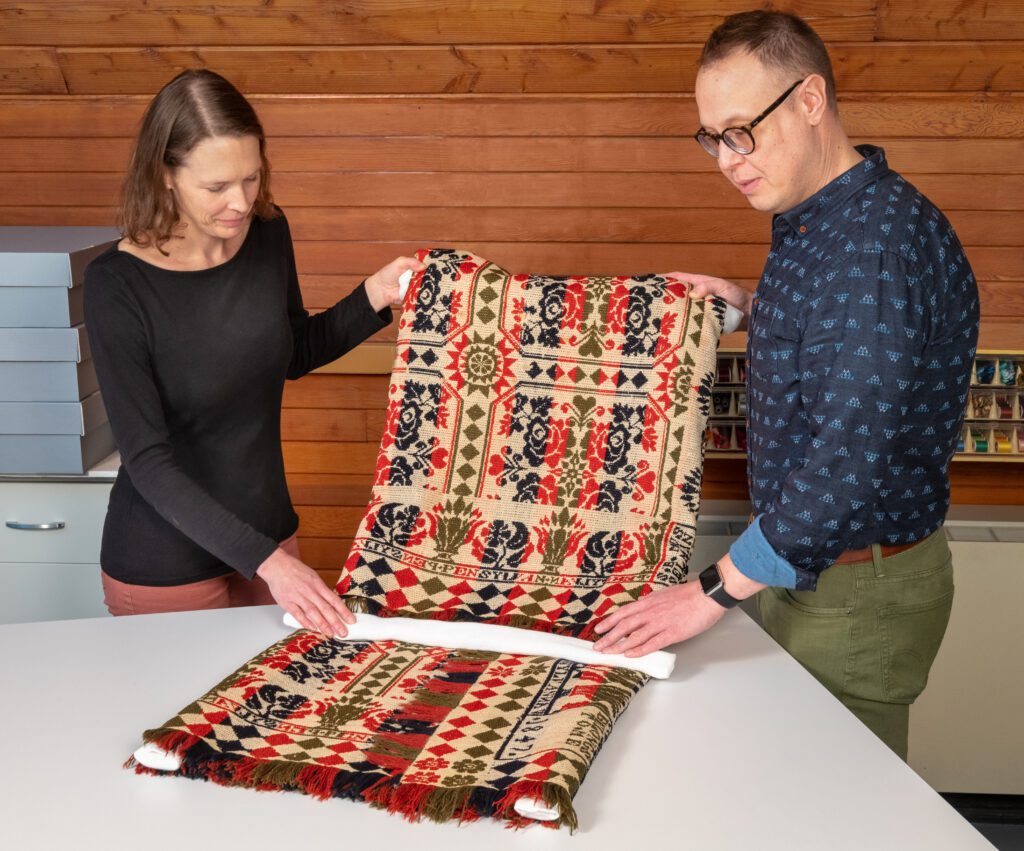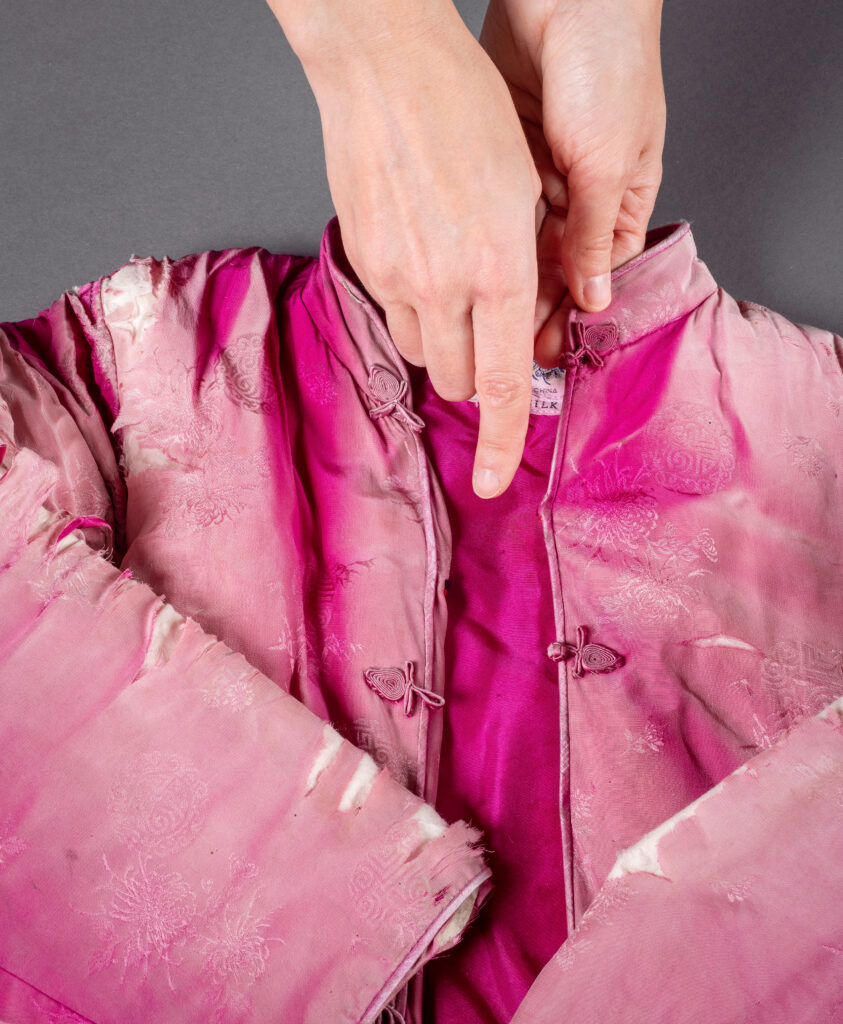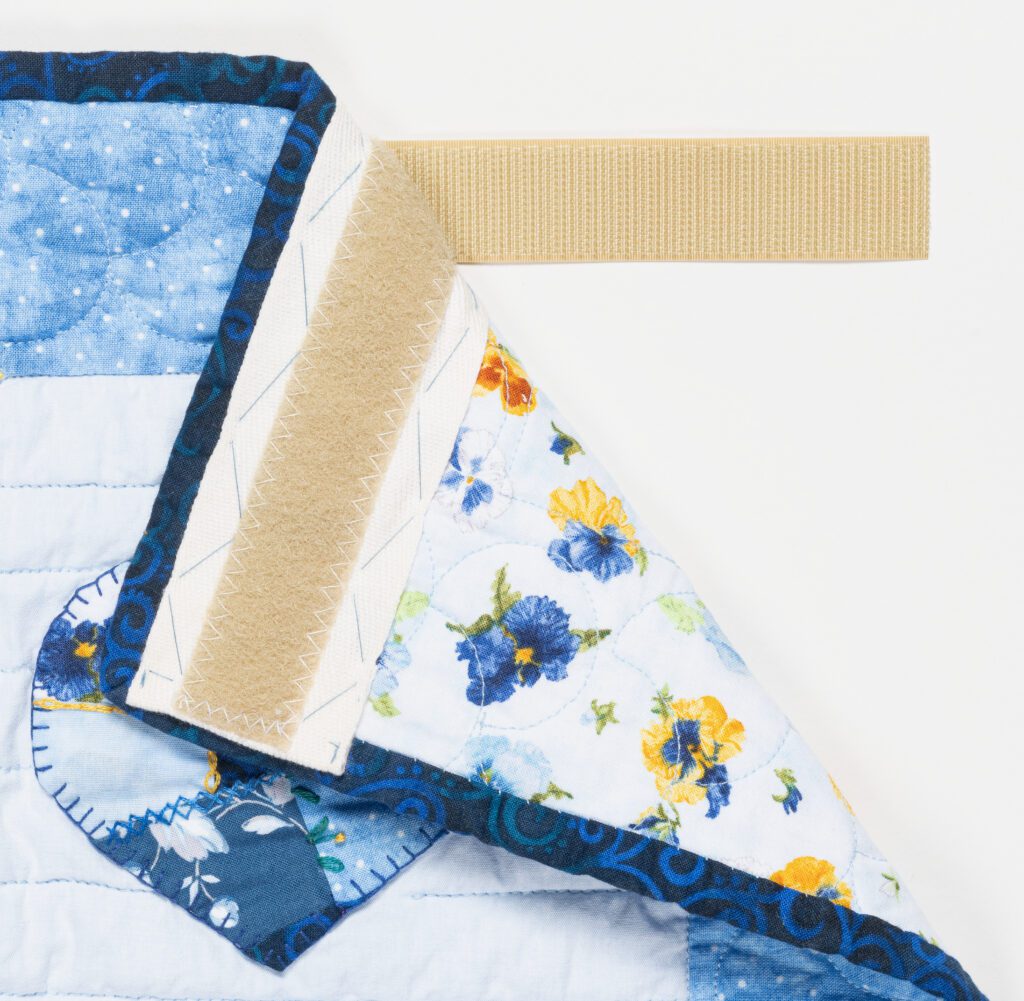
Textiles are more than just fabric; they weave together the stories of our homes, families, and personal journeys. Whether it is a hand-stitched rug or needlework, or a cherished heirloom like a wedding dress, these pieces hold special meaning. To keep your treasured textiles looking their best for years to come, here are some helpful tips you can use at home.
If you want to display your textiles, think about where and how to show them, to reduce the risk of damage and ensure their long-term care. Light exposure is a key factor to consider, as both ultraviolet (UV) and visible light can harm textiles, with UV being particularly damaging. We suggest putting UV filters on windows and using specialized glass or acrylic for frames. Make sure your framer uses archival materials and avoids having any adhesives directly touch historic textiles.
You may want to showcase larger items like quilts and tapestries by mounting them on the wall using hook-and-loop fasteners like Velcro®. The softer loop side can be machine-sewn onto cotton twill tape, which can then be hand-stitched onto the top edge of the textile. This will provide even support along the entire length of the piece.
1. Display
Caring for curtains, rugs, and upholstery can be challenging as they are constantly in use. As with other textiles, limit light exposure as much as possible, especially direct sunlight. Curtains can be lined with less precious fabric and rotated if possible. Carpet protectors under furniture feet can help reduce damage to the pile by distributing weight. Remember, any textiles subjected to regular use will naturally show signs of wear and tear over time.
2. Storage
Storage systems for textiles that are not on display should effectively protect against light damage and dust buildup. While various textiles may require different types of support, all benefit from a stable environment, avoiding extreme temperatures and humidity levels. We recommend not storing valuable items in basements or attics. We suggest keeping these textiles where you live—storing them in a bedroom is a good option.
3. Boxes
At Winterthur, we store textiles in archival boxes. Polyethylene plastic bins can be a cost-effective alternative for home textile collectors. This type of plastic is ideal because it’s more stable and doesn’t emit volatile gases. No matter the box you use, line it with a large piece of cotton muslin or an undyed bed sheet. This lining acts as a supportive sling, making it easier to lift items out of the box. Folded textiles may eventually suffer from fiber breaks along the fold line. To minimize harsh creasing, we pad the folds with unbuffered acid-free tissue. You can also use a rolled undyed cotton textile such as a pillowcase, terry cloth towel, or bed sheet.

4. Hangers
Although many garments can be stored in boxes, some items are better suited for hanging. These include those that are in good structural condition, have three-dimensional parts that could be crushed if stored in a box, and are not made of stretchy materials. A good hanger will evenly distribute the weight without distorting the collar, shoulders, or sleeves. Many museums opt for plastic hangers, although wooden hangers are a good option if the wood is covered with an aluminum foil barrier. Cover the hanger with polyester batting to create a padded shoulder support, then cover the padding with medical stockinette or cotton fabric for added protection. For pants or skirts, choose hangers with wide clamps for optimal support. Avoid hangers with small slips, as they can lead to distortions and tears.
5. Rolls
Some textiles, such as carpets, are best stored rolled. Long and narrow items, like lace, are also suited for this type of storage. While museums use archival tubes, home collectors can use a cardboard tube wrapped in aluminum foil to create a protective barrier. The weight and diameter of the tube should match the size of the textile. Start by wrapping a small piece of cotton around the tube completely, then overlap the edge of your textile with this fabric. This cotton header will help make it easier to roll the textile more evenly. Once rolled, cover the textile with clean cotton muslin or an undyed bed sheet. To keep out light and dust, secure the rolled package with cotton twill tape. Don’t forget to attach a photo and label to the twill tape so you can easily identify what it is.
6. Care and Cleaning
Textiles displayed in your home should be monitored for dust accumulation. Dust attracts insects and moisture, and over time it may become embedded in the surface, potentially causing chemical alterations. To clean the dust, use a soft brush or a puffer tool, carefully guiding the dust into a vacuum nozzle. Be careful with the vacuum to avoid suction that is too powerful and avoid using abrasive upholstery brushes on delicate textile surfaces. If you do use an upholstery brush, use a gentle up-and-down tapping motion. Or place a fiberglass screen over the textile before vacuuming to provide an extra layer of protection.
Washing or wet cleaning historic textiles is a considerable intervention and should only be attempted cautiously. Textile conservators perform extensive and thorough testing before any wet cleaning to ensure that the dyes and materials are safe for water exposure. If we decide that wet cleaning is safe and appropriate, we often use deionized water and Orvus WA paste, which is a surfactant without any optical brighteners or additives. More information is available in the book Caring for Your Cherished Objects. We recommend that you consult a textile conservator if you have any questions about whether a textile is suitable for wet cleaning.

For more conservation tips, see our book Caring for your Cherished Objects which can be purchased in the Museum Store.
Explore More at Winterthur!
Visit our Conversations with the Collection exhibition in the Galleries.
Interested in visiting the conservation labs? Join one of our monthly behind-the-scenes tours!
Sign up for a free consultation with our conservation staff and students to learn about how to take care of your family treasures.
Useful links:
Need professional advice? Use this tool to find a professional conservator near you!